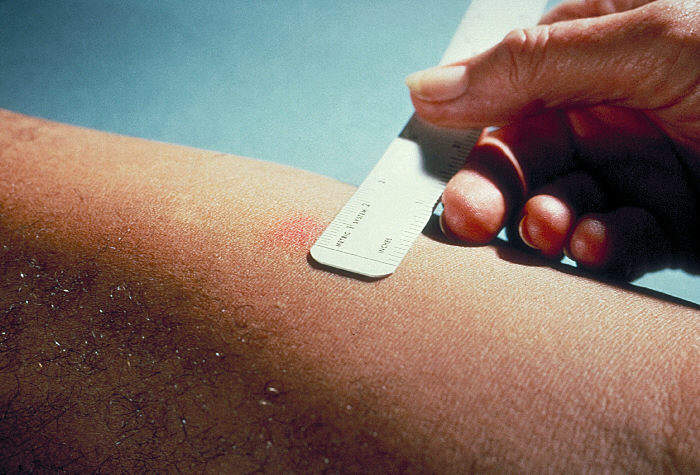Tuberculosis is ubiquitous within the Indian healthcare system, and thus the diagnosis of the disease is an important step in attaining treatment options for patients. A recent issue is the over-prescription of antibiotics for tuberculosis (TB) patients, worsening the prevalence of multi-drug-resistant tuberculosis (MDR-TB) within India.
There are two testing types to diagnose TB, Interferon gamma release assays (IGRA) determines the immune response to TB proteins in whole blood samples. IGRA tests provide fast results, within 24 hours, and do not rely on health practitioner perception in deciphering the results for accurate diagnosis. IGRAs allow for quantitative results and qualitative results. In respect to quantitative results, the IGRAs provide a numerical value that includes response to the TB antigen and two controls, nil and mitogen. Qualitative results are outlined as negative, positive, indeterminate, or borderline. The market for IGRA tests is dominated by Qiagen and Oxford Immunotec, with over 40% and 20% market share, respectively. Conversely, there are nucleic acid amplification tests (NAAT), which are molecular tests that detect DNA in TB bacteria.
India has the highest TB burden globally and to battle this, the government has implemented a plan with the aim to eliminate TB by 2025. The National Strategic Plan (NSP) sets out specific recommendations to aid in the elimination of TB. The plan outlines to Detect, Treat, Prevent, and Build. Detection is an important step in the plan as it aims to detect MDT-TB with universal testing and systematic screening of high-risk populations. The main diagnostic test used for MDT-TB within India is Cepheid’s GeneXpert. An alternative test is the TrueNAT by Molbio, which is a point-of-care test, allowing diagnostic access in hard-to-reach rural areas. The market share of Cepheid is likely to increase in the coming years within India, as the NSP makes specific recommendations for the GeneXpert. IGRAs are not heavily relied upon in India due to the complexity of the test and the cost.
In addition, there are significant financial barriers in attaining treatment for MDR-TB within India. One of the main variances is regarding the poor populace and their inability to have access to care; this is caused by the low participation of private care providers within rural areas. A recent program in Chhattisgarh was implemented to decrease the financial burden for treatment of MDR-TB. The study demonstrated there is a wide gap between actual disease issues in relation to policy and there must be stringent changes made in order to create infrastructure necessary for access to MDR-TB.
The only way to achieve the government’s goal of TB eradication by 2025 is to implement streamlined diagnostic programs in addition to providing support for public treatment centres, in order to ensure patients undergo mandatory treatment programs to completion after diagnosis.
How well do you really know your competitors?
Access the most comprehensive Company Profiles on the market, powered by GlobalData. Save hours of research. Gain competitive edge.

Thank you!
Your download email will arrive shortly
Not ready to buy yet? Download a free sample
We are confident about the unique quality of our Company Profiles. However, we want you to make the most beneficial decision for your business, so we offer a free sample that you can download by submitting the below form
By GlobalData








Related Company Profiles
Oxford Immunotec Ltd
Qiagen NV
NSP Co., Ltd
Cepheid Inc